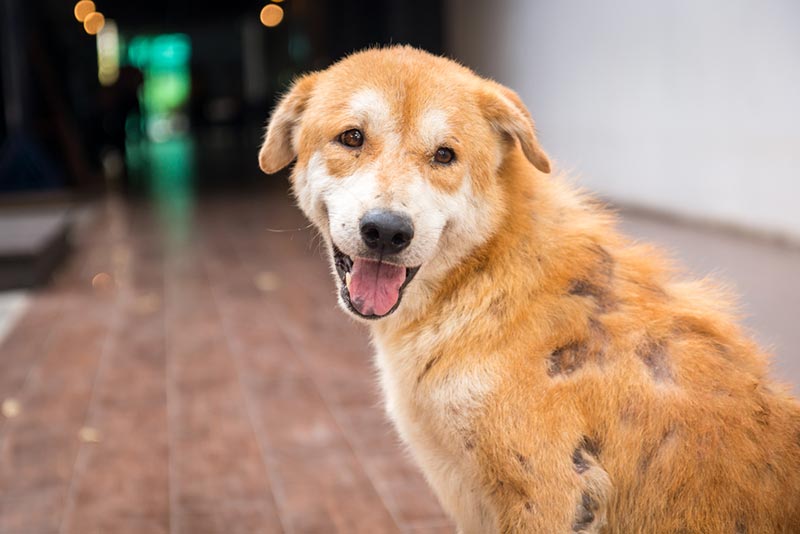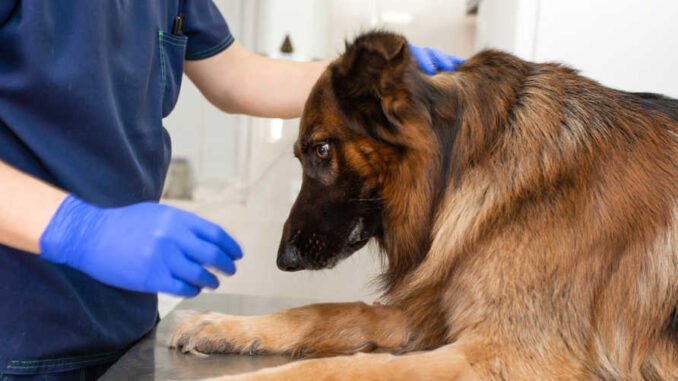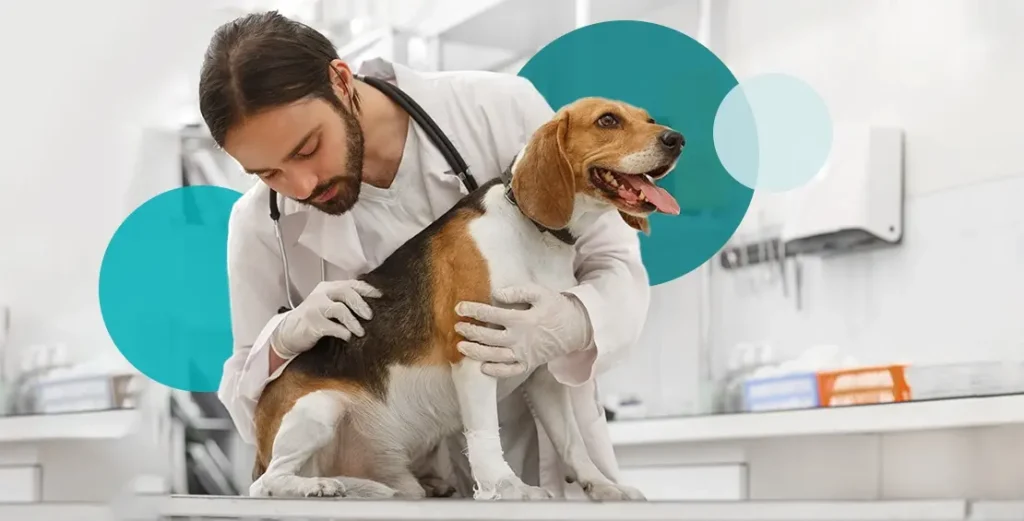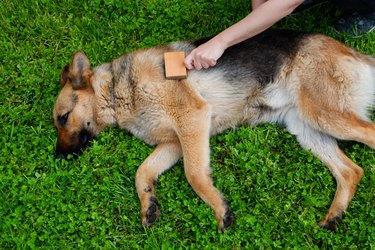A scab is a crust that grows over a wound to provide protection as it heals. Hair is essential to dogs because it keeps their skin safe, controls body temperature, Dog’s Hair Grow Back After Scab , and enhances attractiveness. In addition to addressing typical worries regarding scabs and hair loss in dogs, this article will look at what influences how quickly a dog’s hair regrows.
Pet owners may provide their furry pets with more excellent care and maintain their comfort and health by being aware of these factors. Understanding how dogs perceive stimuli, such as doorbells, can greatly enhance their environment. Learn more about your dog’s perspective on the doorbell dilemma here: Doorbell Dilemma: How Does a Dog Perceive Himself and the Doorbell?
Causes of Scabs in Dogs

Injury and Trauma
Dog bites, scratches, and other forms of trauma can result in scrapes. These injuries may occur from mishaps, play, or altercations with other animals. A scab forms on an injured dog’s skin to shield the region while it heals. It’s critical to monitor these scabs to prevent infection and promote healthy healing in the dog.
Infections
Infections can also cause dog scabs. While fungal infections may originate from damp settings, bacterial infections may arise from unclean wounds. Scratches can result from parasitic illnesses, such as those brought on by fleas or mites, which irritate the skin. Treating these infections as soon as possible is critical to keeping your dog comfortable and guaranteeing their skin recovers correctly.
Allergic Reactions
In dogs, allergic responses can result in scabs. Dog skin irritations can be caused by environmental allergens, like dust mites, pollen, or food allergies. Scratching and scab formation may result from this irritation. Recognizing and avoiding these allergens will help maintain the health of your dog’s skin and help prevent scabs.
Dermatological Conditions
Dermatological illnesses like mange, hot spots, and other skin disorders can cause scratches in dogs. These ailments cause skin irritation, which causes itching and the development of scabs. Proper care is required to reduce pain and encourage healing.
The Healing Process

- Formation of a Scab: The body’s normal reaction to damage is the creation of a scab. Blood clots grow on cuts or scratches in dogs to stop the bleeding. A scab forms when these clots dry out and become stiff. The scab shields the incision from debris and germs so that the underlying skin can heal securely. When the healing process is finished, the scab peels off naturally.
- Healing Stages: Inflammation, tissue development, and remodeling are phases of healing. First, inflammation cleans the wound. New tissue then grows to fix the harm. Lastly, remodeling fortifies the newly formed tissue, returning the skin to its typical state of function and appearance.
- Factors Influencing Healing: A dog’s age, health, and diet are all factors that affect healing. Healthy, younger dogs typically recover more quickly. A healthy diet gives essential vitamins and minerals that support the healing process. On the other hand, elderly dogs or canines with medical conditions might heal more slowly. Recovery is aided by appropriate food and care.
Hair Regrowth after a Scab

Normal Hair Regrowth
Normal hair regeneration in dogs usually starts a few weeks after an injury or scab heals. However, the timetable may change depending on the breed and style of the coat. Regrowth may occur more quickly in certain breeds with faster-growing hair and later in others with thicker coats or slower-growing hair. The exact features of each dog’s coat determine how wholly and soon its hair will regrow.
Potential Complications
Scarring, which can harm hair follicles and inhibit hair regrowth in that location, is one possible side effect of scabs. Chronic infections or continuing skin problems might also hamper healing and the creation of new hair. Proper wound care and treatment of underlying skin diseases are crucial to avoid these issues and to guarantee that your skin and coat stay healthy.
Promoting Healthy Hair Regrowth

- Suitable Closure Management: To remove dirt, gently wash the wound with water and mild soap. Use a fresh bandage or dressing to keep it safe. Chlorhexidine is one antiseptic that can help stop infections. Topical medications, such as antibiotic ointments, promote healing.
- Dietary habits and dietary supplements: A well-balanced diet rich in proteins, lipids, vitamins, and minerals supports skin and coat health. Omega-3 fatty acids, zinc, and vitamin E are essential for keeping skin healthy and encouraging hair growth.
- Stopping Additional Damage: Control the surroundings around your dog to reduce the chance of harm or annoyance. Consider donning protective clothing, such as boots or coats, in inclement weather or areas where injuries are likely.
When to Consult a Veterinarian

Dog wounds can manifest as ongoing redness, edema, or drainage from the injured region. Overzealous licking or itching of the incision may be a sign of infection or pain. If you see these symptoms, call your veterinarian as soon as possible to arrange a comprehensive assessment and appropriate care to prevent further issues and encourage healing.
Professional Treatments
Veterinarians may recommend drugs like steroids or antibiotics to treat infections or inflammation in complex cases. Treatments that encourage tissue repair and healing include hydrotherapy and laser therapy. Surgical treatments such as skin grafts or reconstructive surgery may be explored to restore skin integrity and function in cases with extensive scarring. Consulting with a veterinarian guarantees that the proper care is provided and catered to your dog’s unique requirements and state.
Conclusion
A dog’s hair usually grows back from a scab that has healed. The dog’s breed, general health, and the extent of the wound can all affect how long treatment takes. Healthy hair regeneration can be encouraged by treating any underlying medical conditions, Dog’s Hair Grow Back After Scab , managing wounds properly, and maintaining a diet rich in essential nutrients. Your dog’s skin will heal well, and its coat will return to its natural state if you watch for any signs of problems, including persistent redness or itching. Seek veterinarian care if necessary.
Frequently Asked Questions (FAQ’S)
When a dog scabs off, will his hair grow back?
Yes, hair will usually grow back as the wound behind the scab heals.
After a scab, how long does a dog’s hair take to grow back?
The time frame varies, but depending on the breed and the extent of the damage, it usually takes a few weeks to months.
Can I take off the scab from my dog’s injury?
No, allow the scab to fall off naturally. Removing it too soon can impede the healing process.
What should I do if my dog is persistently scratching at the scab?
Use an Elizabethan collar to stop more inflammation, and see your veterinarian if the excessive scratching doesn’t go away.
Can infections impact the restoration of hair following a scab?
Infections must be treated immediately because they might impede healing and hinder hair development.
